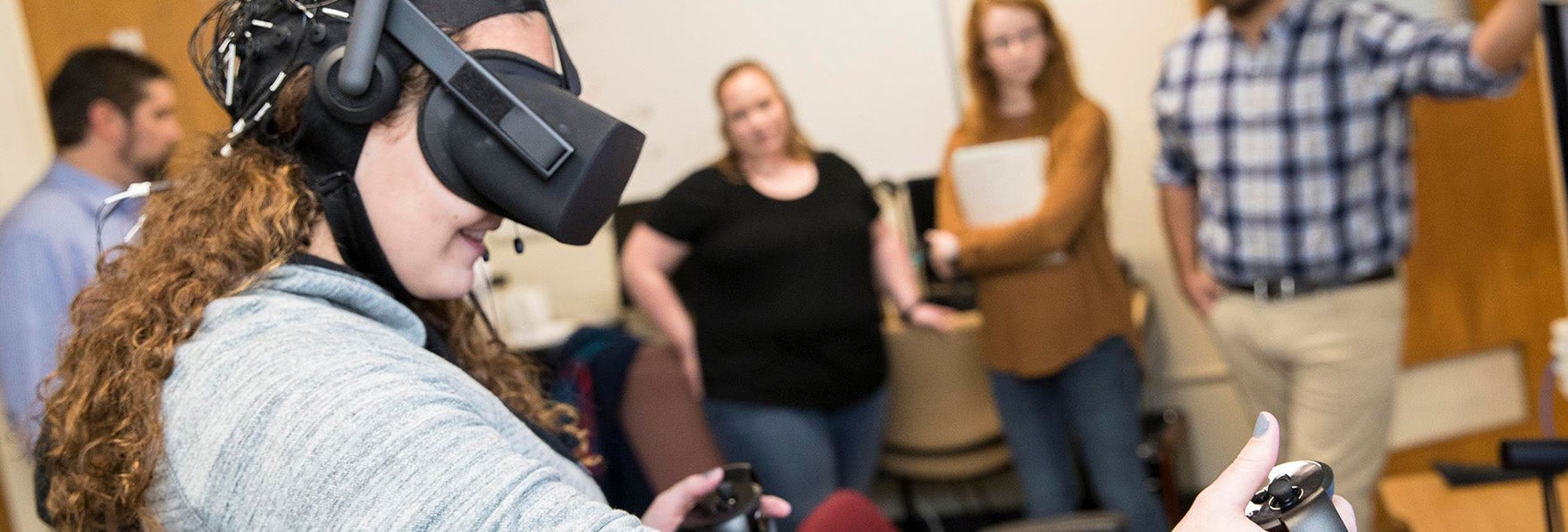Visual Motor Lab
Research within Visual Motor Lab (VML) involves projects that examine visual attention, arousal, mental workload, and visual processing through neuroimaging. The goal of our research program is to understand how vision and cognition control and modulate motor behavior. This research is based on the use of eye movement recordings, biometrics, and psychophysiological recordings including EMG, EEG, and ECG as well as other measures to examine cognitive function in information rich environments. The lab is designed to measure human motor behavior in dynamic situations through in-field assessment, virtual simulations or in more static, self-paced laboratory tasks. Our secondary focus includes research to determine how visual search behavior influences motor dysfunction such as Mild Traumatic Brain Injury (mTBI) and freezing of gait in Parkinson’s disease. At the core of this research is to investigate the links between the perceptual (processing) and motor systems (output). To accomplish this goal, we examine the antecedents and consequences of an individual’s ability to function in dynamic situations based on physiological changes that can either facilitate or debilitate performance.
Student Research Opportunities
There are many research opportunities within the VML for both undergraduate and graduate students. Graduate and undergraduate research opportunities are available through projects related to thesis, independent study, practicums, or independent research projects. Research assistantships for graduate students are often available. The VML provides students with the opportunity to work on faculty lead projects or their own innovative research projects. Recent undergraduate projects include: Comparison of slow-releasing vs. high glycemic carbohydrate supplementation to improve mental performance following exhaustive exercise; Neurological evidence of quiet eye in expert and novice golfers. Some examples of recent graduate student projects are: Cognitive demands of gait retraining; The relationships between muscle force steadiness and visual steadiness in young and old adults; Comparison of visual fixation patterns and tracking methods used by NCAA Division-I Female volleyball players; Gaze control in collegiate players during the hitting phase of softball; Eye movement and attentional control as marker for freezing in Parkinson’s disease; and Implicit versus explicit self-defense training on self-Efficacy, affect, and subjective well-being.
Lab Director

